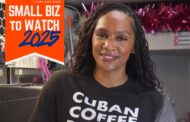An illness forecaster is never more valuable than when the threat of a widespread virus is high. This year’s severe flu season, however, is only one of the leading contributors to Sickweather’s uptick in interest — and its recent oversubscribed $1 million crowdfunding campaign, said founder Graham Dodge.
“We learn a lot every cold and flu season, whether severe or not, and with each season that passes, our machine learning models for predicting onset and peak weeks get smarter,” he said, noting it’s the seventh season of data collection for Sickweather and the third season the app-based technology firm has attempted to predict 15 weeks in advance.
The Kansas City-based company closed a SeedInvest crowdfunding campaign Friday with more than $1 million committed by more than 930 investors. Sickweather backers already included Kansas City-based Firebrand Ventures, Brad Feld, 500 Startups, Techstars Ventures and Sprint.
Created by a team of epidemiologists, Sickweather monetizes its platform by selling data licenses to public health organizations and a variety of enterprises. It also offers clients a dashboard that provides detailed analytics, data export tools and interactive forecasts.
Flu cases across the U.S. took a steep jump throughout December, with 48 states now classified as having “widespread activity,” according to the Centers for Disease Control. (Activity is “high” in both Kansas and Missouri.) This season’s virus has alarmed experts because of the elevated rate of flu-related sickness and hospitalization — the highest since the Swine Flu pandemic of 2009, the CDC reports.
At least 63 child flu patients in the U.S. have died so far this season (compared to 110 for all of the 2016-2017 season). Flu activity typically peaks between December and February, but is expected to extend into March, according to the CDC.

Sickweather’s tech scans thousands of social media postings and direct reports from its users to generate illness maps and forecasts. It’s accuracy amid this season’s conditions has caught the attention of a wide range of customers and users — and investors, Dodge said.
“One of our largest clients representing an over-the-counter flu remedy told us that our 15-week flu forecast this year was ‘spot on,’” he said. “We’ve emerged from this season with increased interest from our clients who are more encouraged by these results and want our data to play a greater role in supply chain decisions, not just for marketing and advertising.”
On the consumer side, Sickweather saw a boost from being featured on such programs as as “Good Morning America” just as the season was heating up.
“We saw an increase in users this season compared to last season with increased engagement, in part due to the media attention we received,” Dodge said, “but also due to improvements to our app — thanks to our first major redesign since launching the app back in 2013.”
As part of the redesign, Sickweather moved its SickScore feature front and center (previously just for wearables), added such features as a Call Doctor button, more detailed symptom tracking, Bluetooth connectivity for smart thermometers, and improved user interface and navigation, Dodge said.







































